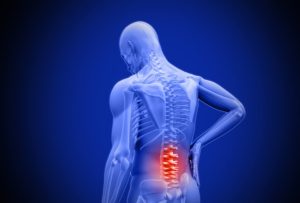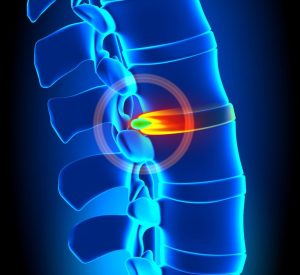Back pain is among the most commonly endured injuries, with lower back pain defined as the most common musculoskeletal problem globally. Ranging from mild to severe, back pain has a lifetime prevalence rate of 65%.

With several ways to treat and manage back pain, it can be difficult to decipher which to pursue as a means of initial action. Whichever path is chosen, however, movement via exercise and stretching at some point of the process will be a necessary intervention to manage or prevent such pain and discomfort.
In what follows, we’ll be discussing all things back pain and how to prevent it from occurring in the first place. More specifically, we’ll be sharing insight into some of the most common causes of back pain, the most effective treatment and preventative exercises to combat back pain, and the importance of exercise and stretching for building back strength and resilience.
Back Pain
A main reason that back pain is among the most commonly endured injuries and the most common musculoskeletal complication globally is that it can occur in multiple scenarios and circumstances. Some examples of these scenarios include poor posture, obesity, inactivity, heavy lifting, overtraining, and subtle but sudden everyday movements.
The back is very vulnerable to injury. Even the simplest actions can trigger an inflammatory response in some area of the back. In addition, back pain can also develop from other physiological health conditions such as arthritis and osteoporosis.
The problem that leads to most instances of back pain is a strain or sprain of the muscles, tendons, or ligaments of the back.
Because the back carries much of the body’s load and many neglect to strengthen the core musculature to support such a load, the back is often placed in compromised positions to get injured, resulting in back pain.
The Most Common Back Injuries
The most common back injuries occur in the muscles supporting the lumbar spine, the latissimus dorsi, and the rhomboids. The muscular injuries are strains and tears.
Injuries involving the spine include sprains of ligaments, herniated disks, and fractures of the vertebrae. A more specific condition that can occur in the cases of herniated disks is the condition of sciatica, which is when a bulging disk in the lumbar spine impinges the nerve root that exits the spinal cord and branches into the sciatic nerve. The sciatic nerve runs down the back of the leg, and the impingement caused by the disk at the spine “shoots” painful nerve impulses down the sciatic nerve.
The following is a summarized detail of the most commonly reported back injuries.
Sprains and Strains
Whether via heavy lifting or unnatural body movement, the muscles and ligaments of the back and spinal column can be sprained or strained. A back sprain or strain is excessive stretching or tearing of a ligament or muscle.

Herniated Disks
Herniated disks occur when the disk, which is the jelly-like soft tissue between the vertebrae that cushion the axial load of the spine, begins to bulge or rupture. The pain of herniated disks is the result of the pressure that it places on the adjacent nerve.
Vertebral Fractures
A vertebral fracture is a dislocation or break of the vertebral bone and is typically caused by a traumatic injury from sports, vehicular accidents, or significant falls. In most cases, this is not a preventable injury since it is accidental.
The best way to prevent or lessen the blow of a back injury is to strengthen the surrounding tissue to ensure that it’s the strongest, most prepared, and most resilient when an injury occurs.
The Best Exercises for Back Strengthening
The healthiest, most effective strategy to combat and prevent back injury and pain is through exercise and strength training that targets specifically the core and posterior chain.
Targeted exercises that avoid placing the back in a position of weakness decrease the risk of injury and are essential for preserving a healthy back.
Using this thought process, one might consider the option of resistance training versus free weights. The safer option is a machine that creates a controlled movement and trains the untrained body to perform any given movement correctly.
Further, a machine prevents the potential for traumatic events during exercise that could easily happen with free weights. These points should be considered when choosing the proper workout method for the back.
Below are some of the best exercises for strengthening back musculature, reducing the risk of back injury, and thus helping to prevent back pain.
Note that it should be understood that the following exercises are not to be utilized for an injured back. Instead, they should be used to strengthen the back to prevent injury.
The Plank
Though not typically viewed as a back exercise, the plank seeks to work the entire core of the posterior chain. Since a weak core is often a primary contributor to the root causes of back pain and injury, strengthening it can help prevent injury and pain.
The Squat
Another exercise not typically associated with the back, the squat, is an incredible compound lift that strengthens the lower extremity and the entirety of the posterior chain and helps reduce the risk of lower back pain. Whether air squats, barbell squats, goblet squats, or others, be sure to master the technique before adding weight to ensure injury prevention.
Dead Hang
At first glance, the dead hang is a lazy man’s favorite stretch. Upon a deeper look, however, the dead hang is an incredible strategy for decompressing the spine, and lower back, releasing any tension that’s cause for concern when it comes to the onset of back pain. It also happens to train core stability, core strength, and back strength.
Plyometrics

Plyometric exercises involve rapid, powerful movements that are explosive in nature. Though it’s important to isolate the back musculature so as to strengthen it and its surrounding areas, it’s also important to provide the spine with an environment of controlled instability. This will teach the spine to be resilient and respond to alterations of movement, thus reducing the risk of injury should a traumatic event or unusual movement occur.
In addition, general activities such as walking, swimming, water aerobics, and even yoga can act as an effective preventative or management method for back pain.
Final Thoughts
One of the most effective methods of back pain prevention, as noted in a meta-analysis of 25 major studies, is regular physical activity and exercise. Through the use of specific techniques to safely exercise the back, preventing injury and pain can be achieved.
